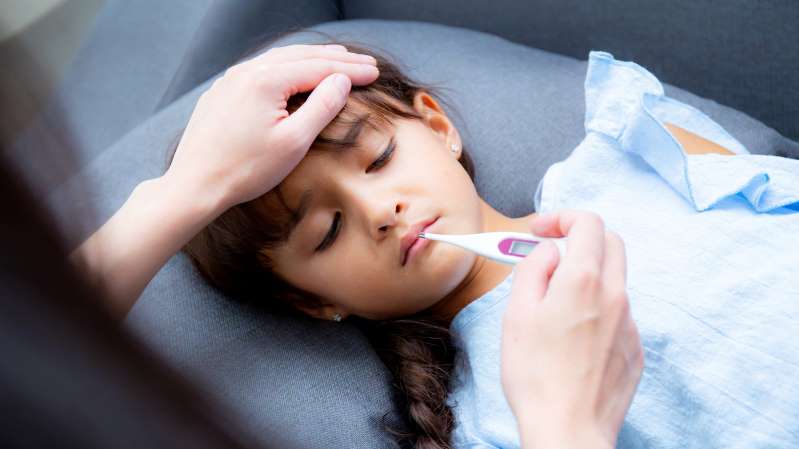What is Kawasaki disease? How to recognize the symptoms in your child

Kawasaki disease, also known as mucocutaneous lymph node syndrome, is an inflammation of the blood vessels that is most common in children. About 75% of Kawasaki disease cases occur in kids younger than five years old.
Overall, the disease is very rare, affecting between 9 and 19 out of every 100,000 children under the age of five in the US. The disease is most common in Japan, where it affects 308 out of every 100,000 children under age 5.
With treatment, most kids with Kawasaki disease can make a full recovery, says Daniel S. Ganjian, MD, a pediatrician at Providence Saint John’s Health Center.
However, Kawasaki disease is the leading cause of acquired heart disease in American kids. Even among kids who get treatment for Kawasaki disease,4% to 6% will develop coronary artery aneurysms, a condition that affects the arteries around the heart.
Many of these aneurysms resolve themselves within two years. In rare cases, the cardiac complications from Kawasaki disease can lead to life-long heart disease or sudden death.
Here’s what you need to know to recognize and treat this rare condition if you’re concerned about your child.
Symptoms
The first stage, which can last through weeks 1 and 2, includes the following symptoms:
High fever (between 100 and 104 degrees Fahrenheit) which lasts for five days or more
Rash on the torso
Bloodshot eyes and “strawberry tongue,” a bright red tongue
Swollen hands and swollen lymph nodes
Discomfort in the mouth, throat or abdomen
Later stages
The second stage, which usually lasts from weeks 2 through 6 after fever begins, can include symptoms like:
Joint pain
Belly ache
Diarrhea
Vomiting
Symptoms will usually resolve within three months, but if the disease is not treated, children may experience serious complications, such as coronary artery aneurysms, which are diagnosed using hospital imaging.
Diagnosis
There’s no specific diagnostic test for Kawasaki disease, so it’s diagnosed based on a child’s symptoms and a physical exam, including inflammatory markers throughout the body, Ganjian says.
And since the early symptoms — fever and rash — can mimic many other childhood diseases, like hand foot and mouth disease, diagnosis can be difficult.
“It’s so frequent that kids get high fevers and rash,” Ganjian said. He recommends going to a children’s hospital or trusted pediatrician if you are concerned about your child.
If the fever has persisted for five days, or the child has symptoms like red, cracked lips and a strawberry tongue or bloodshot eyes, you should seek medical attention.
Causes
The cause for Kawasaki disease isn’t known, but doctors suspect that it’s caused by infection, or by the body’s immune response to infection.
It’s most common in Japan, and in America, it occurs most often in children of Asian heritage, especially of Japanese and Korean heritage, Owusu-Ansah says.
Genetics can also play a role in who develops Kawasaki disease. A 2019 study found that genetic variations, including in the ACE gene, which controls enzyme production, increase susceptibility to the disease.
Boys are twice as likely as girls to have Kawasaki disease. Boys whose parents had the disease are more likely to have it themselves, says Leo Nissola, MD, an immunology scholar at The Parker Institute for Cancer Immunotherapy.
Kawasaki disease and COVID-19
Preliminary studies have found that some children who test positive for COVID-19 are also exhibiting symptoms of Kawasaki disease.
A 2020 article published in The Lancet noted a “30-fold increased incidence of Kawasaki-like disease” at one Italian medical center before and during the pandemic. And similar reports of increased cases of a Kawasaki-like disease have also come out of the US.
However, there are also key differences. The children in the Italian study were slightly older than is usual with Kawasaki disease. And the racial differences that are typical with Kawasaki disease have not been present.
“We don’t want to call it Kawasaki, because then providers are looking for Asians or really young kids, and missing other cases,” Ganjian explains.
Treatment
If you believe your child is displaying symptoms of Kawasaki disease, seek medical advice from your pediatrician or the emergency room at a children’s hospital.
“If your child has manifested a fever and you noticed that it is lasting more than a couple of days, you need to seek medical help,” Nissola says. “Keep your eye out for unusual symptoms, like pink eyes, swollen tongue, redness in the hand or feet, rashes in the body, and swollen lymph nodes around the neck.”
To treat Kawasaki disease, doctors will take action to reduce inflammation in the swollen blood vessels.
Parents should not try treating suspected Kawasaki disease or PIMS at home. Only a doctor will be able to administer the following treatment methods:
Intravenous immunoglobulin. IVIG treatment infuses immunoglobulin — antibodies derived from plasma donations — into the blood. These antibodies help regulate the body’s immune response, to reduce and prevent further inflammation.
Aspirin. Small doses of aspirin can be used to reduce inflammation and pain for children. Your doctor will advise the right amount for your child.
Steroids. Steroids can also help reduce inflammation, Ganjian says, which your doctor may choose to prescribe.
Before IVIG treatment, 20% to 25% of kids with Kawasaki disease developed coronary artery aneurysms, but with the treatment, only 4% to 6% of children will develop this complication.
Most of these aneurysms resolve within two years, but in some cases they can lead to lasting heart disease or death. Children who develop aneurysms should meet with a cardiologist, Owusu-Ansah says.
The bottom line
Both Kawasaki disease and PIMS remain very rare. Ganjian says that most COVID-related cases have occurred in kids with other medical conditions, although he said “at this point, we just don’t know,” what conditions might increase risk for developing PIMS.
“Parents are going to start worrying about all their kids, so it’s important to note that this is very rare,” he says.





